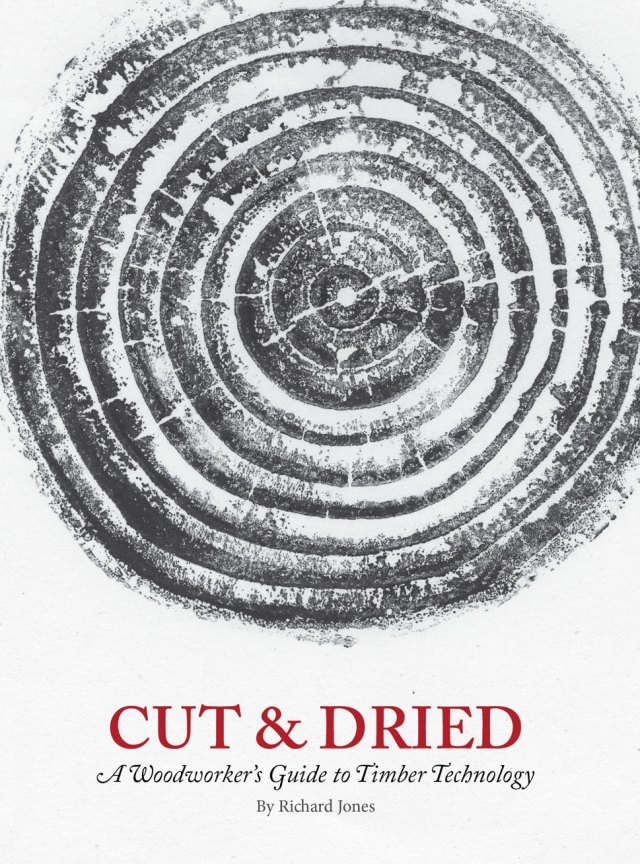During the last few months we have released a lot of material, including two books, a chore coat and the return of five T-shirt designs. We never intended all these new products to come out at once (with more in the wings).
This happened because we don’t operate like a typical publishing business that releases books timed with the seasons of the year. Instead, we release books when there is nothing more we can do to them to make them better. As a result, we have both dry spells and this current deluge of excellent material, including our latest book.
We have just sent off “Cut & Dried: A Woodworker’s Guide to Timber Technology” by Richard Jones to the printer, and it is scheduled to ship in mid to late May. This book was a massive undertaking by Richard, who sought to explain everything a serious woodworker needs to know about wood in language and terms intended for the artisan.
There are, of course, lots of excellent scientific papers and tomes available that explain wood as a construction material. Most of these resources are written for wood scientists. Others are written for project managers at large construction firms. Still others are aimed at the large cabinetshop that deals with sheet goods almost exclusively.

This book is massive – 9″ x 12″, hardbound, with 336 pages on heavy coated stock. The entire book is in full color with a full-color dust jacket. As a result, this book is $65, a price that includes domestic shipping.
If you order during this pre-publication period, you will receive an instant pdf download of the book, which is searchable and (of course) portable. After the book is released, the pdf will cost $32.50.
“Cut & Dried” is intended to become a reference for any shop that deals with solid wood. It is carefully organized so you can find the answers to problems at the bench, or questions at the drafting table.
Here is the detailed Table of Contents, which makes that point better than any blog entry from me:
As always, all our books are produced entirely in the U.S., using the highest-quality materials. Our books’ signatures are sewn for longevity – we don’t offer glued-together pages spit out by a print-on-demand copier. We work with printing plants that care deeply about the survival of the printed word in this age of cheap information.
One more point: We keep our books in print as long as authors are willing to do so. Every standard book we’ve released in the last 11 years is still in print. So even if you can’t afford “Cut & Dried” today, it will be here in 18 months (unlike a traditional publisher) for you to purchase at that time.
— Christopher Schwarz
P.S. Numerous retailers, including Lee Valley Tools and Classic Hand Tools in the U.K. have expressed interest in selling this title. So look to those retailers if you are in Canada or the U.K.















